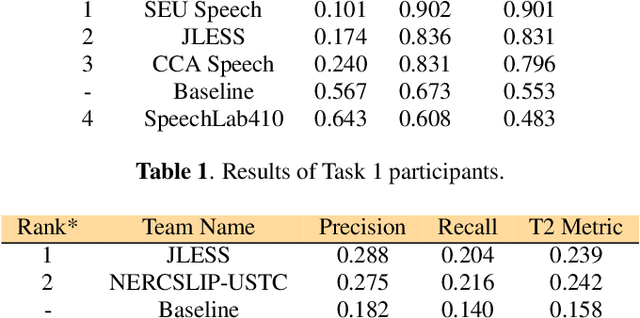Riccardo Fosco Gramaccioni
Stable-V2A: Synthesis of Synchronized Sound Effects with Temporal and Semantic Controls
Dec 19, 2024



Abstract:Sound designers and Foley artists usually sonorize a scene, such as from a movie or video game, by manually annotating and sonorizing each action of interest in the video. In our case, the intent is to leave full creative control to sound designers with a tool that allows them to bypass the more repetitive parts of their work, thus being able to focus on the creative aspects of sound production. We achieve this presenting Stable-V2A, a two-stage model consisting of: an RMS-Mapper that estimates an envelope representative of the audio characteristics associated with the input video; and Stable-Foley, a diffusion model based on Stable Audio Open that generates audio semantically and temporally aligned with the target video. Temporal alignment is guaranteed by the use of the envelope as a ControlNet input, while semantic alignment is achieved through the use of sound representations chosen by the designer as cross-attention conditioning of the diffusion process. We train and test our model on Greatest Hits, a dataset commonly used to evaluate V2A models. In addition, to test our model on a case study of interest, we introduce Walking The Maps, a dataset of videos extracted from video games depicting animated characters walking in different locations. Samples and code available on our demo page at https://ispamm.github.io/Stable-V2A.
Ship in Sight: Diffusion Models for Ship-Image Super Resolution
Mar 27, 2024Abstract:In recent years, remarkable advancements have been achieved in the field of image generation, primarily driven by the escalating demand for high-quality outcomes across various image generation subtasks, such as inpainting, denoising, and super resolution. A major effort is devoted to exploring the application of super-resolution techniques to enhance the quality of low-resolution images. In this context, our method explores in depth the problem of ship image super resolution, which is crucial for coastal and port surveillance. We investigate the opportunity given by the growing interest in text-to-image diffusion models, taking advantage of the prior knowledge that such foundation models have already learned. In particular, we present a diffusion-model-based architecture that leverages text conditioning during training while being class-aware, to best preserve the crucial details of the ships during the generation of the super-resoluted image. Since the specificity of this task and the scarcity availability of off-the-shelf data, we also introduce a large labeled ship dataset scraped from online ship images, mostly from ShipSpotting\footnote{\url{www.shipspotting.com}} website. Our method achieves more robust results than other deep learning models previously employed for super resolution, as proven by the multiple experiments performed. Moreover, we investigate how this model can benefit downstream tasks, such as classification and object detection, thus emphasizing practical implementation in a real-world scenario. Experimental results show flexibility, reliability, and impressive performance of the proposed framework over state-of-the-art methods for different tasks. The code is available at: https://github.com/LuigiSigillo/ShipinSight .
Overview of the L3DAS23 Challenge on Audio-Visual Extended Reality
Feb 14, 2024

Abstract:The primary goal of the L3DAS23 Signal Processing Grand Challenge at ICASSP 2023 is to promote and support collaborative research on machine learning for 3D audio signal processing, with a specific emphasis on 3D speech enhancement and 3D Sound Event Localization and Detection in Extended Reality applications. As part of our latest competition, we provide a brand-new dataset, which maintains the same general characteristics of the L3DAS21 and L3DAS22 datasets, but with first-order Ambisonics recordings from multiple reverberant simulated environments. Moreover, we start exploring an audio-visual scenario by providing images of these environments, as perceived by the different microphone positions and orientations. We also propose updated baseline models for both tasks that can now support audio-image couples as input and a supporting API to replicate our results. Finally, we present the results of the participants. Further details about the challenge are available at https://www.l3das.com/icassp2023.
 Add to Chrome
Add to Chrome Add to Firefox
Add to Firefox Add to Edge
Add to Edge